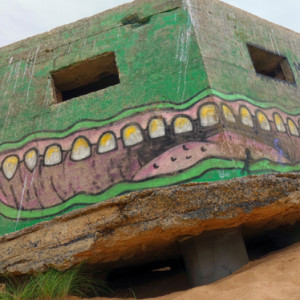For the defence of the realm.
We live in troublesome and worrying times but it was a damned sight worse in Britain back in 1940.
The United Kingdom was threatened with an invasion by Nazi Germany and we were ill-prepared to resist it. In particular, beach defences were required to prevent a landing by hostile forces. In Scotland alone, 52 miles of eastern coastline offered good access for tanks, and a further 20 were considered vulnerable to infantry assault. All needed defence in depth. The North East of Scotland was thought to be an ideal site for a beach landing by the German army, due to its firm sandy beaches. Indeed, during 1938, the German airship Graf Zeppelin had photographed the North East Scottish coast in great detail and other German aircraft had also been seen photographing the coast.
The man responsible for the erection of beach defences in northern Scotland, from the Forth to Wick, was Chief Royal Engineer G A Mitchell, a veteran of the First World War. In a few months on 1940 he organised the construction of an array of beach defences including concrete blocks and complexes of interlocked tubular scaffolding poles to hinder the landing of tanks and other vehicles, as well as barbed wire entanglements, pillboxes, mine fields and gun emplacements. Mitchell is buried in our village cemetery close to some of the defences that he designed and organised.
This reinforced concrete type 24 pillbox sits, now at a crazy angle, in the dunes behind the beach a few miles south of Newburgh. The extra shows another view. It is one of over 18,000 that were built in 1940. The soldiers within would have been armed with rifles and light machine guns.
The Talpids were there a few days ago!


Comments
Sign in or get an account to comment.


